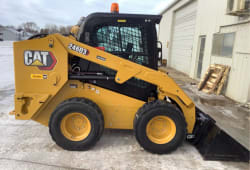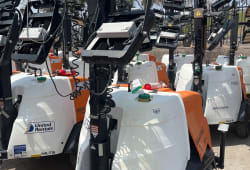Navigating the Essential Role of Forestry Equipment in Sustainable Resource Management
3 Min read
)
March 31, 2024
In the realm of heavy machinery, forestry equipment stands out as essential tools for sustainable forest management and timber harvesting operations. These specialized machines play a crucial role in maintaining forest health, maximizing productivity, and minimizing environmental impact. Let's delve into the world of forestry equipment and understand its significance in the timber industry.
Introduction to Forestry Equipment
Forestry equipment encompasses a diverse range of machinery specifically designed for tasks related to forest management and timber harvesting. From felling trees and delimbing logs to transporting timber and processing wood, these machines are instrumental in every stage of the forestry supply chain. Engineered for rugged terrain and adverse weather conditions, forestry equipment is built to withstand the challenges of working in remote forest environments.
Types of Forestry Equipment
Forestry equipment comes in various forms, each tailored to specific tasks and terrain conditions. Some common types include:
Harvesters: These specialized machines are equipped with cutting heads and processing attachments to fell, de-limb, and buck trees with precision and efficiency.
Forwarders: Designed for transporting felled trees from the cutting site to a centralized loading area, forwarders are equipped with hydraulic cranes and articulated chassis for navigating rough terrain.
Skidders: Used to drag felled trees from the cutting site to a landing or processing area, skidders come in different configurations, including cable, grapple, and clamshell models.
Chippers and Grinders: These machines are utilized for processing logging residues and woody biomass into wood chips or mulch, which can be used for various purposes, including energy production and landscaping.
Importance of Forestry Equipment in Sustainable Resource Management
Forestry equipment plays a pivotal role in sustainable forest management practices by:
Minimizing Waste:
By efficiently harvesting and processing timber, forestry equipment helps minimize waste and maximize resource utilization, ensuring that valuable timber products are not left unused in the forest.
Reducing Environmental Impact:
Modern forestry equipment is designed with environmental considerations in mind, employing technologies such as low-impact harvesting techniques and fuel-efficient engines to minimize habitat disturbance and emissions.
Improving Safety
Mechanized forestry operations using specialized equipment enhance worker safety by reducing the risks associated with manual tree felling and handling.
Enhancing Productivity
Forestry equipment significantly increases productivity compared to manual labor, allowing for more efficient timber harvesting and processing operations.
Factors to Consider When Selecting Forestry Equipment
Choosing the right forestry equipment for a particular operation requires careful consideration of several factors, including:
Terrain Conditions: The type of terrain in which the equipment will operate influences the choice of machinery, with factors such as slope steepness and soil type affecting machine performance.
Size and Capacity: Equipment size and capacity should be matched to the scale of the operation and the size of the trees being harvested to ensure optimal efficiency and productivity.
Technology and Features: Advanced features such as GPS guidance systems, telematics, and automated controls can enhance operational efficiency and performance but may also increase upfront costs.
Maintenance and Support: Access to maintenance services, spare parts, and technical support is essential for keeping forestry equipment operational and minimizing downtime.
Conclusion
Forestry equipment plays a critical role in sustainable forest management practices, enabling efficient timber harvesting and processing while minimizing environmental impact. From harvesters and forwarders to chippers and grinders, these specialized machines are indispensable assets in the forestry industry. By investing in the right equipment and adopting best practices, forestry professionals can ensure the long-term health and productivity of forest ecosystems while meeting the demand for timber products.

Caleb Woods is an experienced content specialist and an editor at Boom & Bucket, blending his journalism background with expertise in the heavy equipment industry. He delivers engaging, informative content to help professionals stay informed and make smarter decisions in the machinery market.







